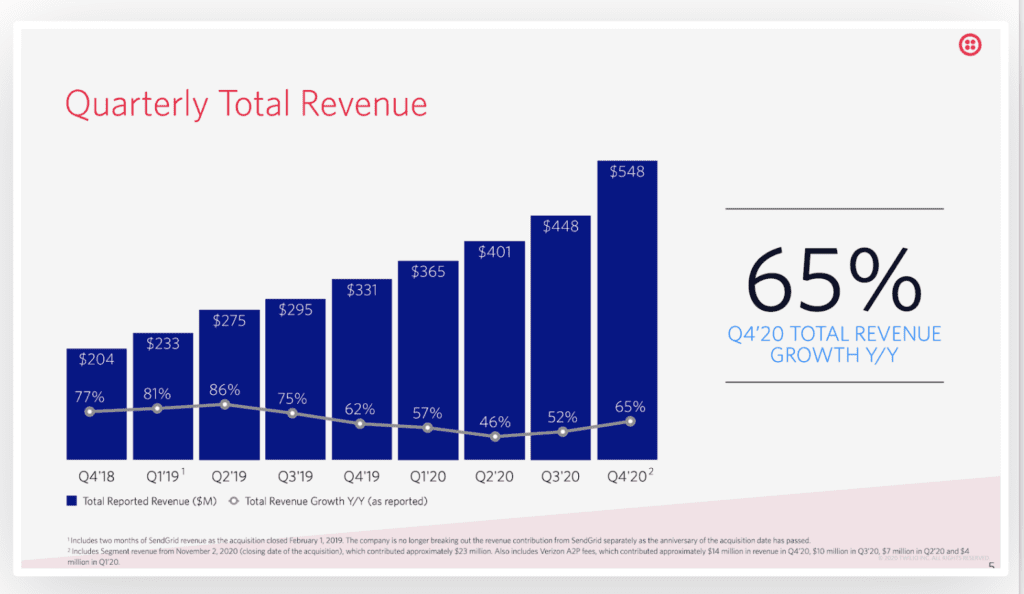Everyone has tough quarters, and usually, at least one tough year (more on that here).
As we approach $10m, and then again as we approach $20m, and then again as we approach maybe $50m and then again after that … we often blame a factor that I believe rarely is really real — The Law of Large Numbers.
The Law of Large Numbers is really two excuses rolled into one:
- Our market isn’t that big. So of course, by $Xm in ARR, or $1Xm in ARR, growth is going to slow down a lot. We’re doing as well as we can be expected, given how niche our market is.
- No way we can add that much more revenue this year. The real challenge in SaaS is that, let’s say you just want to go from $5m last year to $10m this year. That means, net of churn, you have to sell more this year than every other year before combined. If you aren’t just crushing it, that can feel close to impossible. How can we add as much or more revenue this year than every past year put together? Goodness.
So you excuse slower growth this year due to the Law of Large Numbers.
Now if that were true, it would indeed be the perfect excuse. But bear in mind, there are several “counter-winds” to the Law of Large Numbers:
- Every SaaS Market is Bigger Than Ever. Look at the latest batch of IPOs, from Twilio to Coupa to MongoDB and more. They are all growing at 70%+ at $100m+ in ARR (more on that here). And many in fact accelerate after $100m ARR. MongoDB is growing 40% at $700m ARR, for example. Twilio is growing over 60% at $2.5B in ARR. It’s not because they are “better” than the last generation of SaaS IPOs (though in many cases, they are). It’s because the markets are bigger. And if all SaaS markets are bigger, if every segment of business is moving more and more to the cloud … then even if the Law of Large Numbers is true for you … it should be true later.
- Upsell, Net Negative Churn, and Second-Order Revenue Come to the Rescue. If you have happy customers and high NPS/CSAT … then at least around $4m-$5m in ARR, generally, your existing customer base itself starts to create real revenue. As a rough rule, aim for at least 120% net revenue from your trailing customer base by the time you hit $4m-$5m in ARR from mid-market and larger customers. That means that, if you execute well here, a big chunk of your growth for this year comes from customers you already closed last year. That means it gets easier, folks. Because last year you didn’t have the big base to upsell to.
- Everyone Gets Better at Driving Up Deal Sizes and ACVs. Over time, everyone learns their customer base and how to add more value. The combination usually means you are able to drive up deal sizes, pricing, and ACV. If you drive up the average deal size just 10-20% this year, that again makes growing your total ARR easier. It’s just math. Everyone that gets good at selling a product learns how at least to drive deal sizes up at least a smidge. Everyone.
- Your Brand Boosts Marketing (and Pricing). Once you hit just a few million in ARR, you’ll start to develop a mini-brand. And once you hit $10m in ARR or so, you’ll almost certainly have a real brand in your space. Once you have a brand, even with a mediocre marketing team, you’ll get pulled into more and more deals. And once you have a trusted brand, you can change at the high end of the market. The combination of the two makes it easier to scale. If you have a positive, high NPS brand in your space and you aren’t getting better and better leads … you’re marketing team is simply terrible. Make a change tomorrow. Maybe even tonight.
- Your Team Gets Better. This is why you want zero voluntary attrition in your sales team. Or probably, your customer success team too. And your demand gen team. Everyone that is truly good gets better. Your best sales reps just have it dialed in. Your CS team knows exactly where the land mines are in saving customers, and how to get them to buy more seats. Everyone just gets better in their second and third year. This makes growing revenue easier, too. Your team just wasn’t as seasoned last year.
- The Great Teams Figure it Out. And finally, let’s be clear. The Law of Large Numbers does hit you earlier if you don’t expand your market, and redefine it. Your very initial 1.0 product may only have a $10m TAM. But the best teams always expand and redefine their markets. It’s not easy. But they always get it done before it impacts ARR growth materially.
So my hope here is that, if nothing else, we’ve challenged your anxiety around the Law of Large Markets. I had this anxiety, myself. We probably all do.
But great teams solve it.
And if you are hitting a LOLN wall … that’s a clear sign. A clear sign:
- You are way behind in adding, and/or upgrading, your senior team.
- And probably a clear sign you are behind on NPS and CSAT.
Just upgrade those two.
You will probably get right back on track.
(note: an updated SaaStr Classic post)



